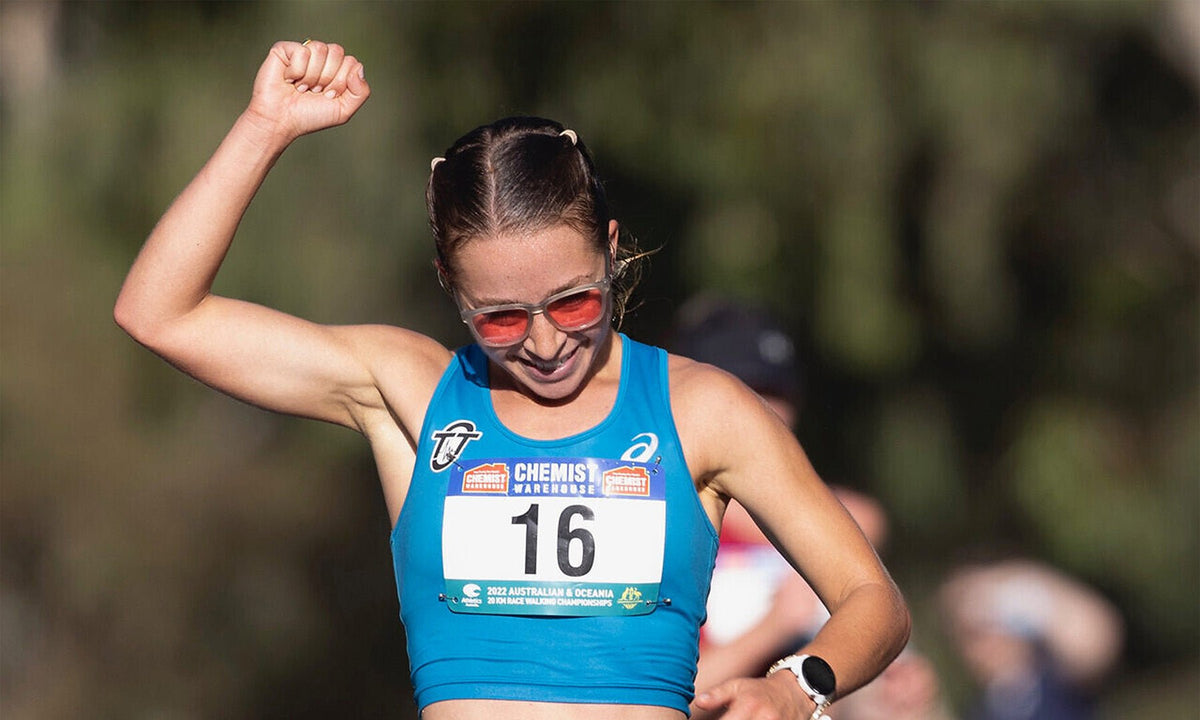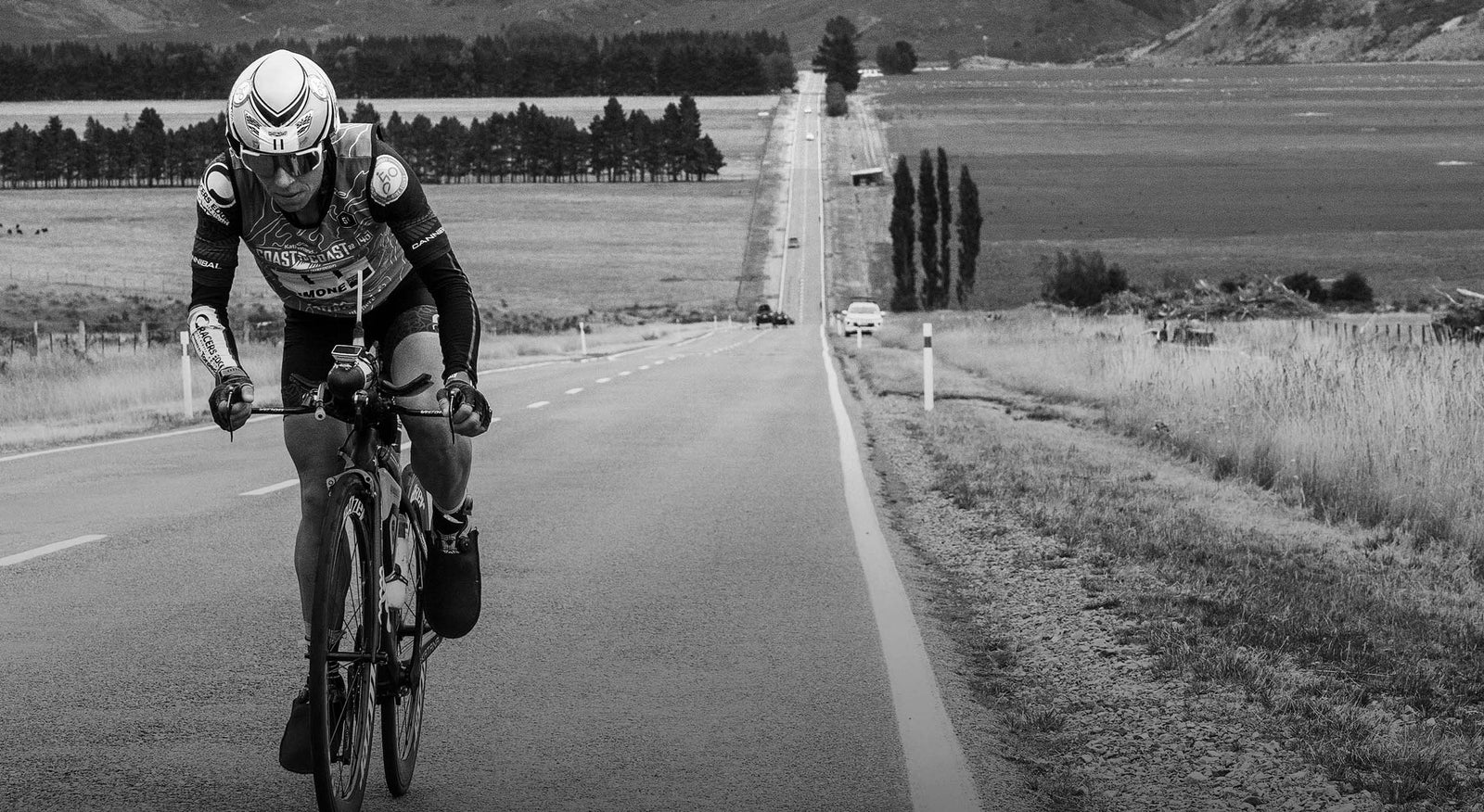We discuss the nutritional demands of elite sport with Jemima Montag, as well as why she chooses Radix Nutrition to help her fuel her success.
Introduction to Jemima Montag
Jemima Montag is an Australian race walker who won Gold in the 20km walk at the 2018 Commonwealth Games and finished 6th at the 2022 Tokyo Olympic Games. At 24 years old, Jemima is also studying medicine, making her life busier than the average athlete.
How did you get into race walking?
There are two questions I’m asked every day: “Do you walk faster than I run?”, and “How did you possibly get into this sport? Does it run in the family (as if it’s a congenital disease)?” Let’s address these below.
Yes, I walk faster than I run! For those familiar with running speeds, I walk 4:20min/km over 20km and even faster over the shorter distances – 4:04min/km over 5km. Our longer slower training walks are done at 5:00min/km. I think the name “race-walking” does the sport an injustice, because it’s really much closer to a run than a walk. I’m brainstorming ways to re-name it. My childhood coach once told me that it’s more like a Latin dance, and I like the sound of that!
How and when I started racewalking is up for debate, because according to mum, as soon as I was up and walking as a toddler, if I wanted to up the pace I would do a fast waddle rather than breaking into a run like the other kids. Perhaps that was the start of it all. At the age of seven I added Little Athletics to my growing schedule of sporting activities, and soon learnt that I was horrible at the speed and power events, and excelled in the endurance arena. As a kid, it just felt good to finally be great at something. I kept it super low-key, training only twice per week and allowing time to explore other passions like study, music, friends, ballet, and cooking. It was only after finishing high school that I set a scary goal of becoming an Olympian and changing up my lifestyle to enable that dream to come true.
Has your appreciation for nutrition changed much over time?
Food has been a core family value for as long as I can remember. It is nostalgic, creative, social, sensory, and nourishing in more ways than one. I love the challenge of making pasta, breads, and sauces from scratch. I love re-creating my nana’s old Polish dishes or sourcing inspiration from the veggie garden.
What began as an exciting family ritual has evolved into a key part of my recovery and performance plan. As a young athlete, I didn’t make the connection between the foods I chose and my performance. I hadn’t yet connected with a sports dietician and was relying on dubious information from wellness bloggers or friends. These often-harmful messages around food and fuelling led me down a slippery slope to Relative Energy Deficiency in Sport (RED-S). Unfortunately, this is what it took for the lightbulb to go off for me, but this is why I’m so passionate about championing the right messages about food for this generation of athletes.
Over the last four years, my appreciation for sports nutrition has changed dramatically. Since connecting with my Rockstar sports dietician (and former Australian representative racewalker) Jessica Rothwell, I have learnt invaluable lessons that I hope to share in the remainder of this blog. This new outlook makes me feel excited about food, and I see it as the absolute key to sound recovery and performance.

How has competing on the world stage influenced your nutritional demands?
My team and I take a very scientific approach to sports dietetics. I do twice yearly DEXA (body composition) and RMR (resting metabolic rate) tests which indicate how much energy my body needs at rest. This means that I need about 1500 calories if I lay in bed all day, just to stay alive. We then estimate the additional energy requirements that come from training morning and afternoon, and from being a full-time medical student who reads a lot! For those interested, I would be requiring ~3,000 calories per day including 8-10g carbohydrate and 1-2g protein per kilogram body mass. I’ve always been a little hesitant to count or track these numbers because I don’t want it to become an obsession, but my sports dietician and I have started using an app called ‘mydietdiary’ to track my nutritional intake, and I just try to remove any emotion and see it as a fun science experiment!
I have also learnt a lot about the specific foods I should be including through my involvement in Professor Louise Bourke’s Supernova research studies at the Australian Institute of Sport.
About 30 of the world’s greatest race walkers were split into three dietary groups: a high-carbohydrate diet, a high-fat (ketogenic) diet, and a periodised control diet. Analysing 10,000m race and physiology results pre- and post-dietary intervention, the research team found that diets providing chronic or periodised high carbohydrate availability maximise performance in elite endurance athletes, whilst fat oxidation increases oxygen demand at a given speed. In other words fat oxidation reduced the economy for the athletes involved (Bourke et al, 2020).
Based on this research, I adopt a periodised approach to sports nutrition, fuelling for the work required. On big training days of up to 30km total, I sandwich the carbohydrate-rich foods in and around the training sessions and maintain a constant drip of quality protein throughout the day. On recovery or lighter days, I can enjoy filling my plate with more colour and micronutrients with less of a carbohydrate focus. This periodisation enables us to achieve performance body composition goals whilst preventing injury and protecting long-term health.
I keep a journal and use indications such as mood, perceived energy levels, recovery time, and consistent menstrual cycles to feel confident that I am fuelling well.
How has Radix Nutrition helped you meet these nutritional demands?
Radix meals have benefited me in three ways: time efficiency, recovery, and clean ingredients.
Time efficiency is the name of the game for a full-time medical student who is preparing for the World Track and Field championships and attempts to maintain a flourishing social life. As much as I enjoy cooking, this daily routine leaves very little time for meal prep. Being able to throw a Radix meal into my bag beside the training shoes and stethoscope is one of the reasons I’m able to achieve this balance.
From a recovery point of view, Radix meals can often be better than anything I’d prepare myself. In any Radix meal you can get such a wide variety of vegetables and an unbeatable protein quality. All Radix version 8 plant-based meals, and plant-based and whey-based breakfasts include Protein DIAAS blends. These blends have a superior amino acid profile than any other protein powder found on the market, and they’ve been proven to achieve world leading absorption rates. It’s impossible to achieve this level of protein quality using ingredients you would find in a supermarket, so this is very exciting for my recovery.
Optimising recovery also means getting a decent meal in within 30-60mins of finishing training. Quickly pouring some water into a Radix meal pack is a great way to re-fuel quickly, rather than waiting for rice or pasta to cook.
The clean wholefood ingredients were the first thing that drew me towards the Radix meals. Ultimately, even if a product saved me time and benefited my recovery, I wouldn’t feel comfortable putting it in my body if the ingredient list was filled with numbers, sweeteners, and oils. A rule of thumb I’ve always used is to “would your Grandma recognise each ingredient in the list?” – and she certainly would when it comes to the wholefoods in a Radix meal. Olympic athletes can be drug tested at any time, and Radix’s clean ingredients make me feel confident that I’m not at risk of a banned substance entering my food.
Other Radix benefits I’ve noted are the reduction of food waste – because the entire meal is in the packet ready to go and we don’t throw out carrot tops and onion skins, a very long shelf life, convenience, and super delicious flavour combinations that leave you satisfied each time.
How do you use Radix in a high-performance setting (i.e. competition and Olympics)?




